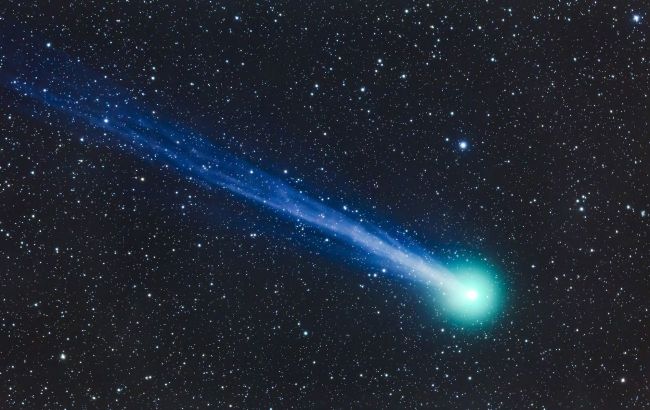'Devil comet' draws closer: When and how to see it
 The Devil comet will soon be visible in the sky (photo: Getty Images)
The Devil comet will soon be visible in the sky (photo: Getty Images)
The well-known comet 12P/Pons-Brooks, also known as the "devil comet," will soon be at the closest point to the Sun. During this time, it will be very bright and visible in the night sky, as reported by Live Science.
Comet 12P/Pons-Brooks, which is 17 km wide, will be at its closest point to the Sun on April 21. It will be at a distance of 232 million kilometers from our star. But on that day, the comet's brightness will reach its peak, so it will be visible in the night sky. Due to the maximum approach to the Sun, this comet, which is green in color due to its special chemical composition, will become much brighter.
According to scientists, the inhabitants of the Northern Globe may not have another such opportunity in the near future.
On April 21, immediately after sunset in the west, it will be possible to see this comet-volcano in the night sky, which often has eruptions. It will be possible to observe this comet for several more nights after April 21.
According to forecasts, the comet will have a magnitude of 5.9, which means that it may not be visible to the naked eye. You will need binoculars or a telescope. The lower the magnitude, the brighter the object. And the human eye can see astronomical objects that have a magnitude below 5.
Comets usually reach their highest level of brightness and are easiest to see when they are at their closest point to Earth. Comet 12P/Pons-Brooks will be in this position in early June. Thus, it will be visible only from the Southern Hemisphere.
This comet was named "Devil" in July last year. It had an explosion and eruption that caused the cloud of gas and dust surrounding the nucleus to take on an unusual shape. It seemed that the comet had "devil's horns" due to a small depression in the nucleus. In fact, the comet has no horns, but this name has remained.
Comet 12P/Pons-Brooks flies into the inner part of the solar system and approaches the Sun and Earth once every 71 years.
Previously, we wrote about the moment of star birth captured by the Hubble telescope.
We also talked about the discovery of glass fragments that may be of cosmic origin.

